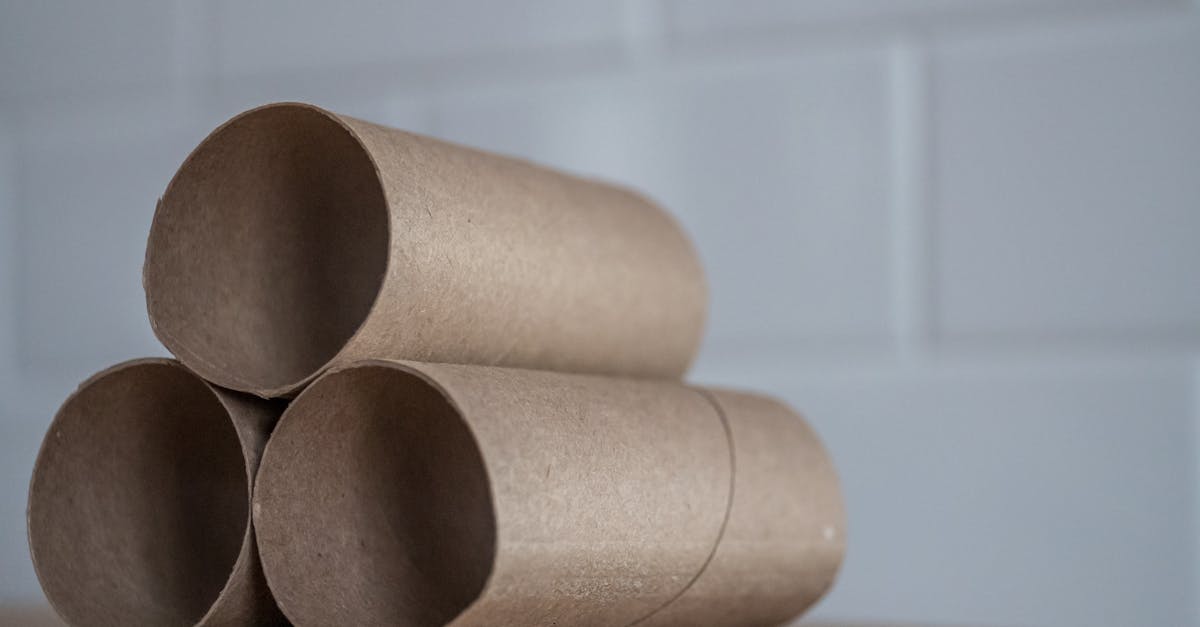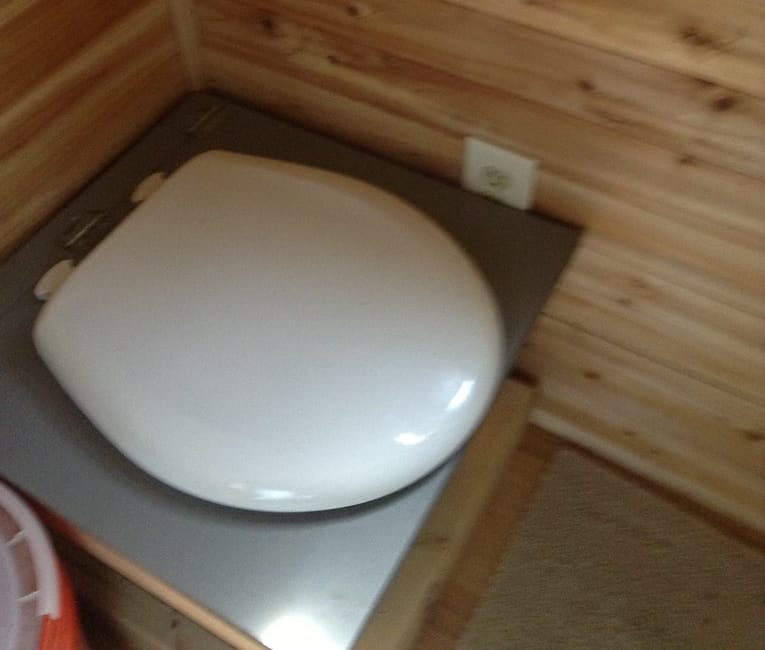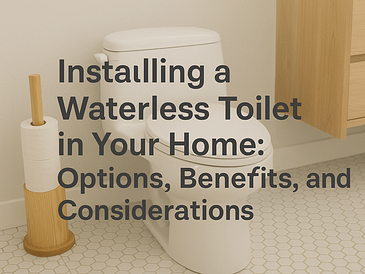The world is at a critical juncture, facing numerous environmental challenges that demand immediate action. One such challenge that often goes unnoticed is the wasteful use of water and the improper disposal of human waste. Traditional flush toilets not only consume vast amounts of water but also contribute to pollution and strain on sewage systems. However, there is a sustainable and eco-friendly alternative that can alleviate these problems: the composting toilet.
In this article, we will delve into the benefits of using a composting toilet as a solution for a greener planet. We will explore how composting toilets not only address the urgent need for water conservation but also provide an efficient way to recycle waste while reducing our impact on the environment. Join us on this journey as we highlight the incredible advantages of composting toilets and discover how they can make a significant difference in sustainable living.
The Biodegradable Toilet: A Sustainable Solution for a Greener Planet
With the growing awareness of environmental challenges, individuals and communities are seeking sustainable alternatives to reduce their carbon footprint. Enter the biodegradable toilet, also known as the composting toilet – a revolutionary solution that offers both ecological and practical benefits. Unlike traditional flush toilets that consume copious amounts of water and rely on sewage systems, composting toilets provide an environmentally friendly alternative for waste management.
Composting toilets operate on the principle of nature’s own decomposition process. They convert human waste into nutrient-rich compost through a combination of aerobic bacteria, heat, and time. This organic matter can then be safely used as fertilizer, closing the loop in nature’s cycle and reducing dependence on chemical fertilizers. By adopting such an innovative solution, individuals contribute to sustainable practices while promoting soil health and fertility.
The positive impact of biodegradable toilets extends beyond individual households; it has global implications as well. The widespread adoption of composting toilets can significantly reduce water consumption since these systems require little to no water for flushing. According to estimates by environmental organizations, traditional flush toilets account for nearly 30% of household water usage. By switching to composting toilets, we can conserve this precious resource without compromising hygiene or comfort.
Going Off-Grid: Why Composting Toilets are Essential for Sustainable Living
Living off the grid has become an increasingly popular choice for those seeking a more sustainable and self-sufficient lifestyle. In this pursuit, composting toilets emerge as a vital component of eco-friendly living. These innovative waste management systems allow individuals to break free from the shackles of traditional plumbing, while simultaneously reducing their environmental impact.
Composting toilets offer a unique solution by transforming human waste into a valuable resource. Unlike conventional flush toilets that require complex sewage systems and consume large amounts of water, composting toilets operate without the need for water or external infrastructure. This independence from mainstream utilities makes them ideal for off-grid dwellers, as well as remote locations where traditional plumbing is impractical or nonexistent.
Beyond their practicality, composting toilets align perfectly with the principles of sustainability. By harnessing the natural processes of decomposition and microbial activity, these eco-friendly alternatives convert waste into nutrient-rich compost. This valuable end product can then be used to fertilize gardens and cultivate healthy soils, closing the loop on our biological cycle while reducing reliance on harmful chemical fertilizers.
Waste Recycling Made Easy: How Composting Toilets Help Reduce Environmental Impact
Composting toilets offer a revolutionary solution to one of humanity’s oldest challenges: waste management. These eco-friendly systems transform human waste into valuable compost, eliminating the need for harmful sewage treatment plants and reducing the strain on our environment. By embracing composting toilets, we can make a significant positive impact on our planet.
Traditional flush toilets consume vast amounts of water and require energy-intensive processing to treat and dispose of sewage. In contrast, composting toilets operate without water or chemicals, relying on natural processes to break down waste into nutrient-rich compost. This approach not only saves precious freshwater resources but also reduces the energy consumption associated with conventional wastewater treatment facilities.
Beyond their water-saving benefits, composting toilets also address another pressing environmental concern: nutrient pollution in our waterways. When sewage enters rivers and oceans, it causes imbalances in aquatic ecosystems, leading to harmful algal blooms and death zones devoid of marine life. Composting toilets divert this nutrient-rich waste from entering water bodies, allowing us to harness its potential as valuable fertilizer instead.
Waterless Toilets: Saving Water, One Flush at a Time
Water scarcity is a pressing concern in many parts of the world. With traditional flush toilets consuming an average of 1.6 gallons (6 liters) per flush, the need for more sustainable alternatives has become paramount. Enter waterless toilets, or composting toilets, offering an innovative approach to waste management while significantly reducing water usage.
Composting toilets operate on the principle of separating solid waste from liquid waste. Instead of using water to flush away waste, these toilets rely on natural processes to break down and convert human excrement into compost-like material that can be safely used as fertilizer. This eliminates the need for conventional plumbing systems and reduces water consumption by up to 90% compared to traditional toilets.
Beyond conserving this precious resource, waterless toilets also save money on utility bills and contribute positively to the environment. By not relying on vast amounts of freshwater for flushing, individuals can make a significant impact in regions where access to clean water is limited or costly. Additionally, using composting toilets reduces the strain on sewage treatment plants, ultimately minimizing the pollution discharged into rivers and oceans.
The Science Behind Composting Toilets: How Nature’s Processes Make it Work
Composting toilets may seem like a peculiar concept, but their effectiveness lies in harnessing the power of nature’s own mechanisms. These innovative systems utilize a combination of biology, chemistry, and physics to transform human waste into valuable compost. The process begins when waste is deposited into the toilet chamber, which contains a mixture of organic material such as sawdust or coconut coir.
The magic happens through a process called aerobic decomposition. This means that bacteria and other microorganisms thrive in the presence of oxygen, breaking down the waste into simpler compounds. As these microorganisms consume organic matter, they release enzymes that accelerate the decomposition process. Additionally, earthworms and insects present in the composting chamber help with further breakdown and nutrient cycling.
Temperature plays a crucial role in facilitating composting. Composting toilets are designed to provide ideal conditions for microbial activity by maintaining temperatures between 40 to 60 degrees Celsius (104 to 140 degrees Fahrenheit). At these temperatures, pathogens and harmful bacteria are effectively killed off during the composting phase. The end result is a rich humus-like material known as “humanure,” which can be safely used as fertilizer for gardens or landscaping.
 The Eco-Friendly Choice: Composting Toilets and their Positive Impact on the Environment
The Eco-Friendly Choice: Composting Toilets and their Positive Impact on the Environment
Composting toilets are undeniably an eco-friendly choice when it comes to sustainable sanitation. By opting for a composting toilet, you are actively contributing to the preservation of our planet’s resources. Unlike conventional flush toilets that require copious amounts of water for each use, composting toilets operate entirely without water, making them a valuable tool in water conservation efforts.
Moreover, composting toilets play a crucial role in minimizing pollution and protecting our precious ecosystems. By separating human waste from freshwater sources, these innovative systems prevent the contamination of rivers and lakes with harmful chemicals found in traditional sewage systems.
Beyond their direct environmental benefits, composting toilets also foster soil health and contribute to organic recycling. The human waste collected in these systems undergoes a natural decomposition process facilitated by microorganisms and oxygen, resulting in nutrient-rich compost known as “humanure.” This organic matter can then be safely used as fertilizer for gardens or agricultural purposes. Through this cycle of waste conversion into a valuable resource, composting toilets effectively close the loop on nutrient recycling while reducing reliance on synthetic fertilizers.
Sustainable Sanitation: Taking a Step Towards a Healthier Future
When it comes to discussing sustainable living, one cannot overlook the importance of sustainable sanitation. Traditional flush toilets consume vast amounts of water and contribute to the contamination of water bodies, posing a threat to both human health and the environment. Composting toilets offer an innovative solution that not only reduces water consumption but also minimizes pollution, promoting a healthier future for all.
By utilizing composting toilets, we can significantly reduce our reliance on water-intensive sanitation systems. These eco-friendly alternatives require little to no water for operation, eliminating the need for large quantities of freshwater that could otherwise be used for more essential purposes. Moreover, the absence of water in composting toilets means no wastewater is generated, preventing pollutants from entering our rivers and oceans.
Another compelling reason to embrace composting toilets lies in their ability to transform waste into valuable resources. Unlike traditional sewage systems that treat human waste as a liability and consume vast amounts of energy in the process, composting toilets harness the power of nature’s decomposition processes. Through proper management and decomposition techniques, these toilets convert organic waste into nutrient-rich compost that can be used as fertilizer for plants or soil amendment. This not only closes the loop on waste disposal but also enriches our soils with vital nutrients while reducing our dependence on chemical fertilizers.
Making Composting Toilets a Part of Your Home: A How-To Guide
Integrating a composting toilet into your home is not only an environmentally conscious choice, but it can also lead to significant cost savings and increased self-sufficiency. In this section, we will explore the step-by-step process of installing and maintaining a composting toilet in your own residence.
Choosing the Right Composting Toilet
The first crucial step is selecting the appropriate composting toilet for your needs. Consider factors such as size, capacity, and ventilation requirements. Additionally, decide whether you prefer a self-contained unit or a split system where the composting chamber is separate from the toilet fixture.
When choosing a composting toilet, opt for models with excellent moisture control systems and convenient access to the composting chamber for easy maintenance. Look for user-friendly designs that ensure odor-free operation while promoting efficient decomposition of waste materials.
Installation and Set-Up
Installing a composting toilet requires some basic plumbing knowledge but can be accomplished by most homeowners. The process typically involves connecting the waste chute to the composter unit and ensuring proper ventilation through an exhaust pipe or vent stack.
Before installation, ensure that you have adequate space in your bathroom or designated area to accommodate both the unit itself and any necessary components such as ventilation pipes or fans. Follow manufacturer instructions carefully during installation to guarantee optimal performance of your composting toilet.
Maintenance and Care
Maintaining a composting toilet is relatively simple once properly set up. Regularly monitor moisture levels within the system by checking if it requires additional bulking agents like sawdust or coconut coir to aid in decomposition. Empty solid waste containers as necessary into designated outdoor compost piles.
Remember to turn the compost pile regularly, ensuring proper aeration and promoting the breakdown of organic matter. Regularly inspect ventilation systems, fans, and filters to ensure efficient odor control. With proper maintenance and care, your composting toilet will function optimally for years to come.
By following this guide, you can successfully incorporate a composting toilet into your home, not only reducing your environmental impact but also enjoying the benefits of cost savings and increased self-sufficiency. Embrace this sustainable solution with confidence and take another step towards a greener future.
The Benefits of Composting Toilets in Remote Locations: No Plumbing, No Problem!
When it comes to remote locations, the lack of traditional plumbing systems can present a significant challenge. However, this is where composting toilets truly shine, offering an innovative and sustainable solution to the age-old human necessity. Whether it’s a remote cabin nestled deep within a forest or a campsite far away from civilization, composting toilets provide a practical and hassle-free alternative to conventional sewage systems.
One of the primary advantages of composting toilets in remote locations is their independence from water and sewer connections. With no need for plumbing infrastructure, these eco-friendly marvels allow individuals to embrace off-grid living without sacrificing basic sanitary needs. By using natural processes like decomposition and evaporation, these toilets transform human waste into valuable compost that can be safely used as fertilizer for plants.
Another noteworthy benefit is the cost-effectiveness of composting toilets in remote areas. Traditional septic systems require extensive installation and maintenance expenses, making them impractical and expensive for locations with limited access to utilities. Composting toilets eliminate these high costs while providing an efficient waste management solution. Not only does this save money upfront but also reduces long-term maintenance expenses, allowing individuals in remote areas to allocate their resources more sustainably.
Enhancing Biodiversity: How Composting Toilets Support Ecosystems
Composting toilets not only offer a sustainable solution for waste management but also contribute to the enhancement of biodiversity within ecosystems. By utilizing natural decomposition processes, these innovative toilets create an environment that fosters the growth of beneficial microorganisms and supports the development of diverse plant and animal species.
The compost produced by these toilets is rich in nutrients, acting as a natural fertilizer that enriches the soil and promotes the growth of plants. This nutrient-rich compost attracts a wide range of insects, such as butterflies and bees, which play a crucial role in pollination. Furthermore, these insects attract birds and small mammals, creating a thriving habitat within the surrounding area.
Moreover, composting toilets aid in conserving water resources by reducing or eliminating the need for flushing. This water conservation not only benefits human communities but also helps maintain adequate water levels in nearby rivers and lakes. Conserving water contributes to preserving aquatic ecosystems and preventing habitat loss for aquatic species such as fish and amphibians.
Conclusion
In conclusion, the benefits of using a composting toilet are undeniable. Not only do these eco-friendly systems provide a sustainable solution for waste management, but they also contribute to the conservation of water resources and promote a healthier environment. By adopting composting toilets in our homes and remote locations, we can reduce our carbon footprint, enhance biodiversity, and support ecosystems. Embracing this innovative approach to sanitation not only allows us to live more harmoniously with nature but also empowers us to make a positive impact on our planet’s future. Let us embrace the possibilities that composting toilets offer, as we strive for a greener and more sustainable world.



